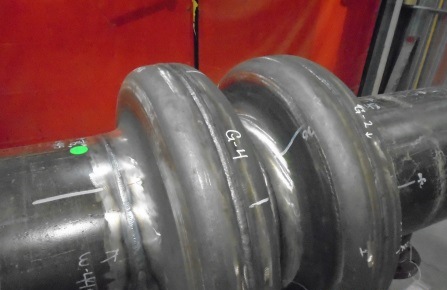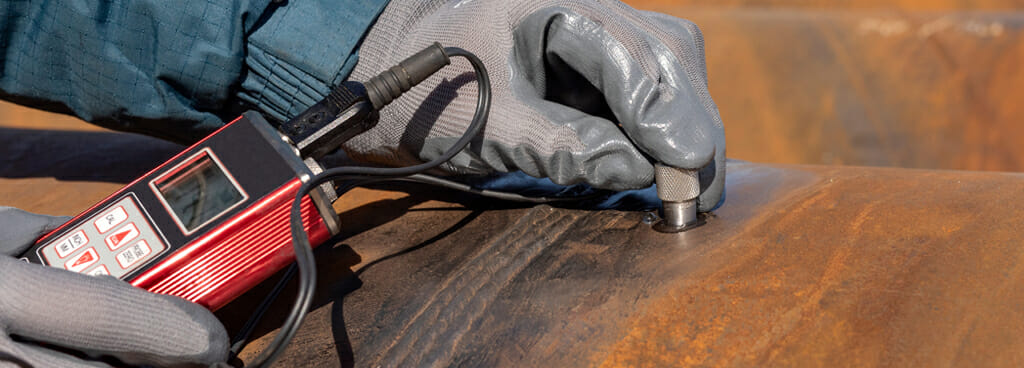A Detailed List for Effective Welding Evaluation Practices
In the realm of welding, the honesty of frameworks is critical, necessitating a strenuous technique to examination methods. A comprehensive checklist acts as an essential device in making sure adherence to sector criteria, including necessary pre-welding, in-process, and post-welding examinations. By systematically addressing material confirmation, weld quality, and comprehensive documentation, companies can considerably boost security and efficiency. What specific components should be focused on in each phase to attain optimal results? Exploring these important components can yield understandings that exceptionally impact welding operations.
Recognizing Welding Standards
Welding requirements play an essential function in ensuring the quality and safety of welded frameworks and parts. These standards establish the criteria for materials, procedures, screening, and evaluation, consequently providing a framework for constant high quality guarantee in welding processes. Various companies, consisting of the American Welding Culture (AWS), the International Company for Standardization (ISO), and the American Society of Mechanical Engineers (ASME), have actually established extensive standards that regulate different aspects of welding.
Understanding welding criteria is essential for professionals in the area, as adherence to these standards minimizes the risk of flaws and failings in bonded joints. These standards cover details demands for weld high quality, consisting of appropriate tolerances, the kind of welding techniques to be utilized, and the qualifications needed for welders and examiners.

Pre-Welding Evaluation Actions
Before any welding procedure starts, a thorough pre-welding evaluation is necessary to identify potential concerns that may jeopardize the high quality of the weld. This preliminary step works as a crucial foundation for guaranteeing conformity with applicable welding codes and criteria.
The very first action in the pre-welding assessment is to confirm the products being used. Next off, it is essential to evaluate the fit-up of the components to make sure proper alignment and joint configuration.
Furthermore, evaluating the cleanliness of the surface areas is vital; impurities such as rust, paint, or oil can detrimentally affect the quality of the weld. Following this, a thorough evaluation of the welding devices should be performed, guaranteeing that it is adjusted and in great working problem.
Lastly, reviewing the certifications of the welding employees is necessary. Welders should possess the needed accreditations and experience to execute the certain welds required for the task. By adhering to these pre-welding evaluation actions, the possibility of flaws and failures in the final weld can be dramatically reduced.

In-Process Inspection Methods
In-process assessment strategies play an essential function in ensuring the stability and quality of welds as they are being executed. These techniques permit examiners to recognize problems or discrepancies from specifications in actual time, thus preventing expensive repair work and making sure adherence to design needs.
One key strategy involves aesthetic evaluation, where assessors assess the weld grain for harmony, penetration, and proper profile. This can be matched by the usage of assesses to gauge weld measurements, guaranteeing compliance with predetermined resistances. In addition, the application of non-destructive screening (NDT) methods, such as ultrasonic testing or magnetic particle screening, during the welding procedure can disclose subsurface flaws that might not show up on the surface.
An additional vital element is keeping an eye on welding criteria, consisting of voltage, amperage, and take a trip rate. Consistency in these criteria is critical for attaining ideal weld top quality. Documenting these criteria during the welding operation offers a traceable record for future reference.
Educating personnel in correct assessment techniques and making use of ideal devices boosts the performance of in-process assessments. By integrating these techniques, companies can accomplish better welds, minimize rework, and eventually ensure the safety and security and reliability of welded frameworks.
Post-Welding High Quality Checks
Complying with the completion of welding operations, post-welding quality checks are critical to validate that the welds satisfy all specified requirements and requirements. These checks are important for making certain the stability and toughness of the bonded joints. The evaluation process typically begins with a visual examination, examining for surface area flaws such as fractures, porosity, or insufficient combination.
Consequently, non-destructive screening (NDT) approaches, such as ultrasonic testing, radiographic screening, or magnetic particle testing, may be utilized to discover inner problems that are not visible to the nude eye. Each approach has its one-of-a-kind benefits and is selected based upon the weld's area, product type, and the nature of the application.
Furthermore, verifying dimensional precision is a vital aspect of post-welding top quality checks. This includes measuring the weld's account, dimension, and positioning to ensure compliance with design specs. Ultimately, examining the mechanical residential or commercial properties of the weld, including tensile strength and ductility, can provide additional guarantee of performance under functional problems. On the whole, extensive post-welding assessments are important for maintaining performance, adherence, and safety to regulative and market standards.
Documents and Reporting
Just how can reliable documents and reporting enhance the welding assessment procedure? Precise visit this site right here documents and comprehensive reporting are crucial parts that ensure the honesty and quality of welding operations. Welding Inspection Milwaukee. They act as an official record of evaluation searchings for, promoting liability and traceability in compliance with sector requirements

A well-structured coverage system makes it possible for inspectors to plainly communicate any type of non-conformances, areas, or disparities needing improvement. This transparency fosters an environment of continual renovation, as stakeholders can easily assess previous efficiency and execute rehabilitative actions.
Moreover, effective documentation consists of in-depth records such as welding treatment specifications (WPS), welder qualifications, and inspection checklists. These aspects supply a structure for evaluating weld top quality and adherence to established standards. In case of disagreements or quality issues, complete documentation acts as a trusted recommendation, decreasing obscurity and safeguarding all celebrations entailed.
Finally, keeping organized documents helps in training and accrediting workers, making certain that market best methods are supported. Eventually, careful documentation and reporting not just enhance home the welding assessment procedure yet likewise add to the total safety and security and integrity of bonded frameworks.

Conclusion
In verdict, blog a detailed checklist for effective welding inspection methods is important for making certain high quality and security in welded frameworks. Adherence to established welding criteria, meticulous pre-welding inspections, rigorous in-process examinations, and comprehensive post-welding top quality checks jointly contribute to the stability of bonded joints.
Welding requirements play a vital duty in making sure the quality and safety and security of welded parts and frameworks. Different organizations, including the American Welding Culture (AWS), the International Organization for Standardization (ISO), and the American Society of Mechanical Engineers (ASME), have actually developed detailed requirements that control various elements of welding.
Adhering to the completion of welding procedures, post-welding high quality checks are crucial to confirm that the welds fulfill all specified requirements and needs - Welding Inspection Milwaukee.In verdict, an extensive list for effective welding evaluation techniques is crucial for making certain high quality and safety in welded frameworks. Adherence to established welding criteria, thorough pre-welding examinations, extensive in-process examinations, and comprehensive post-welding high quality checks jointly add to the honesty of welded joints